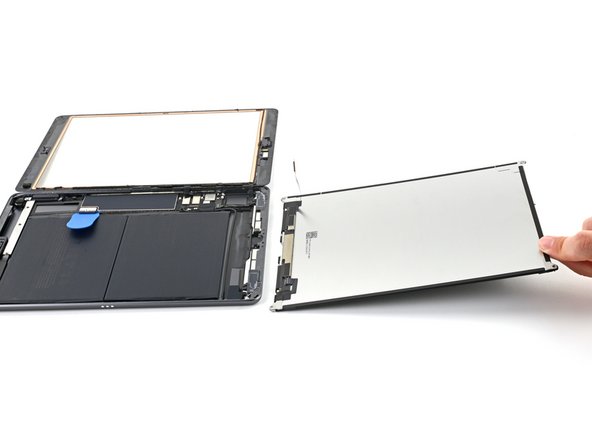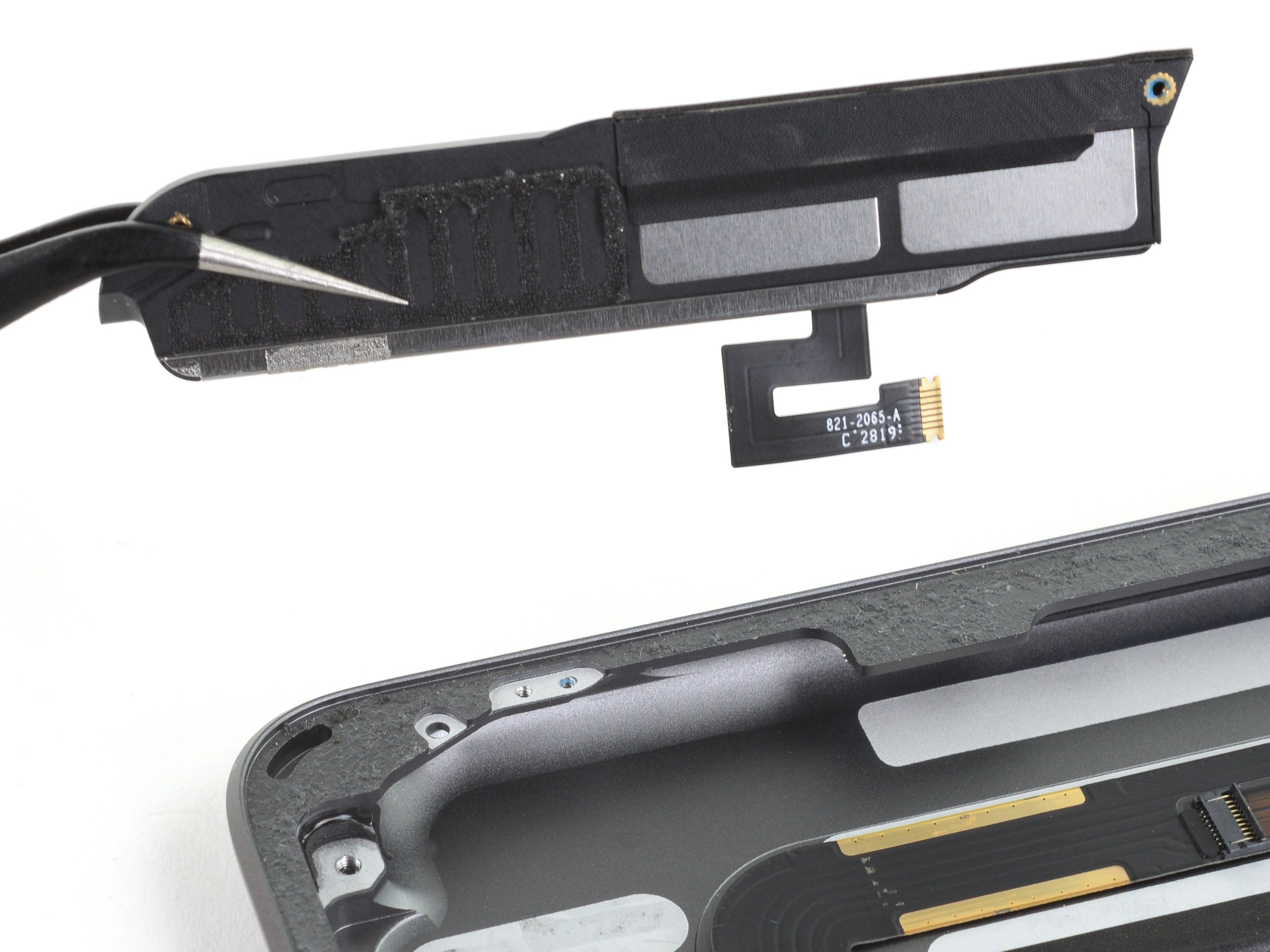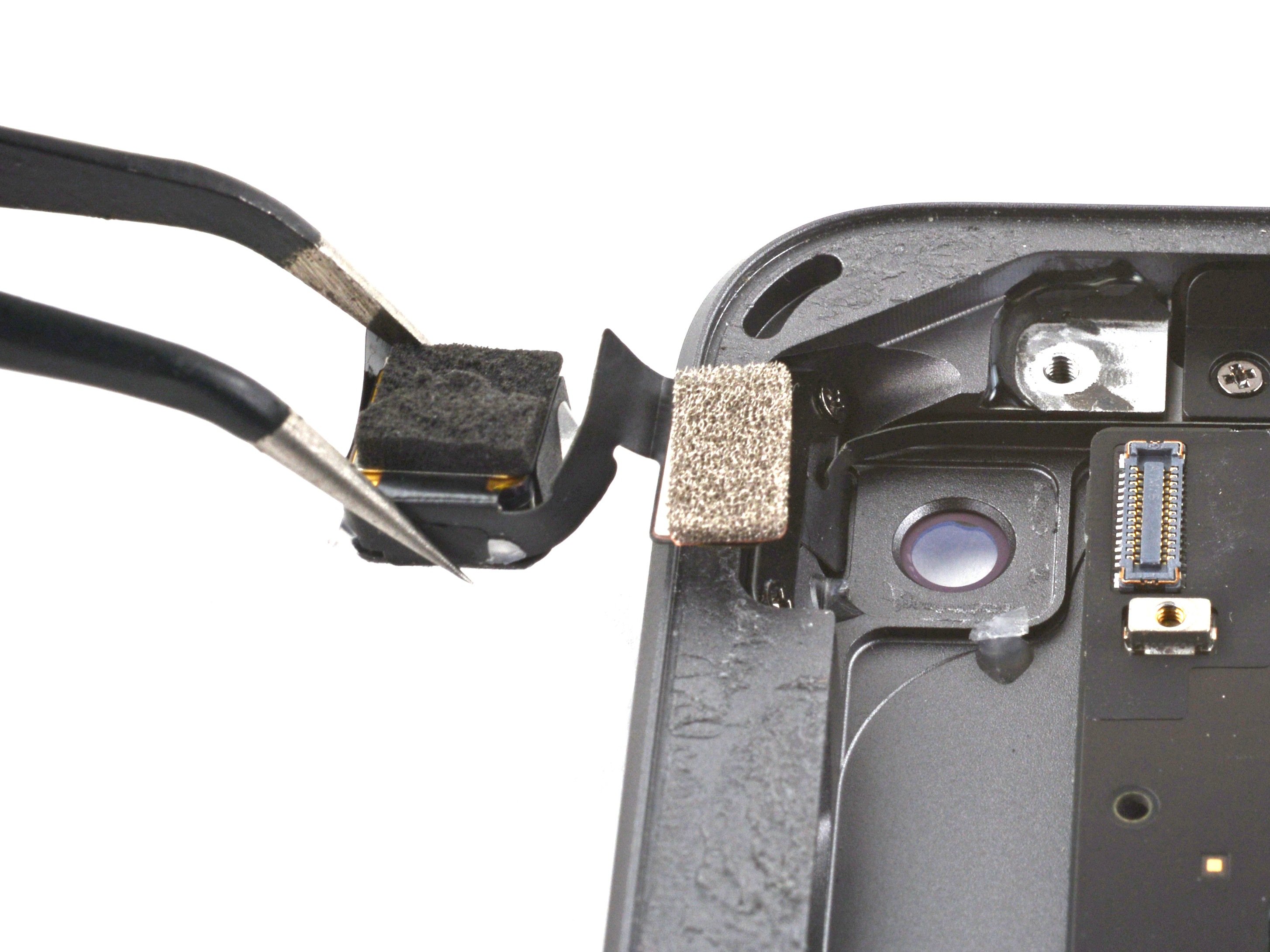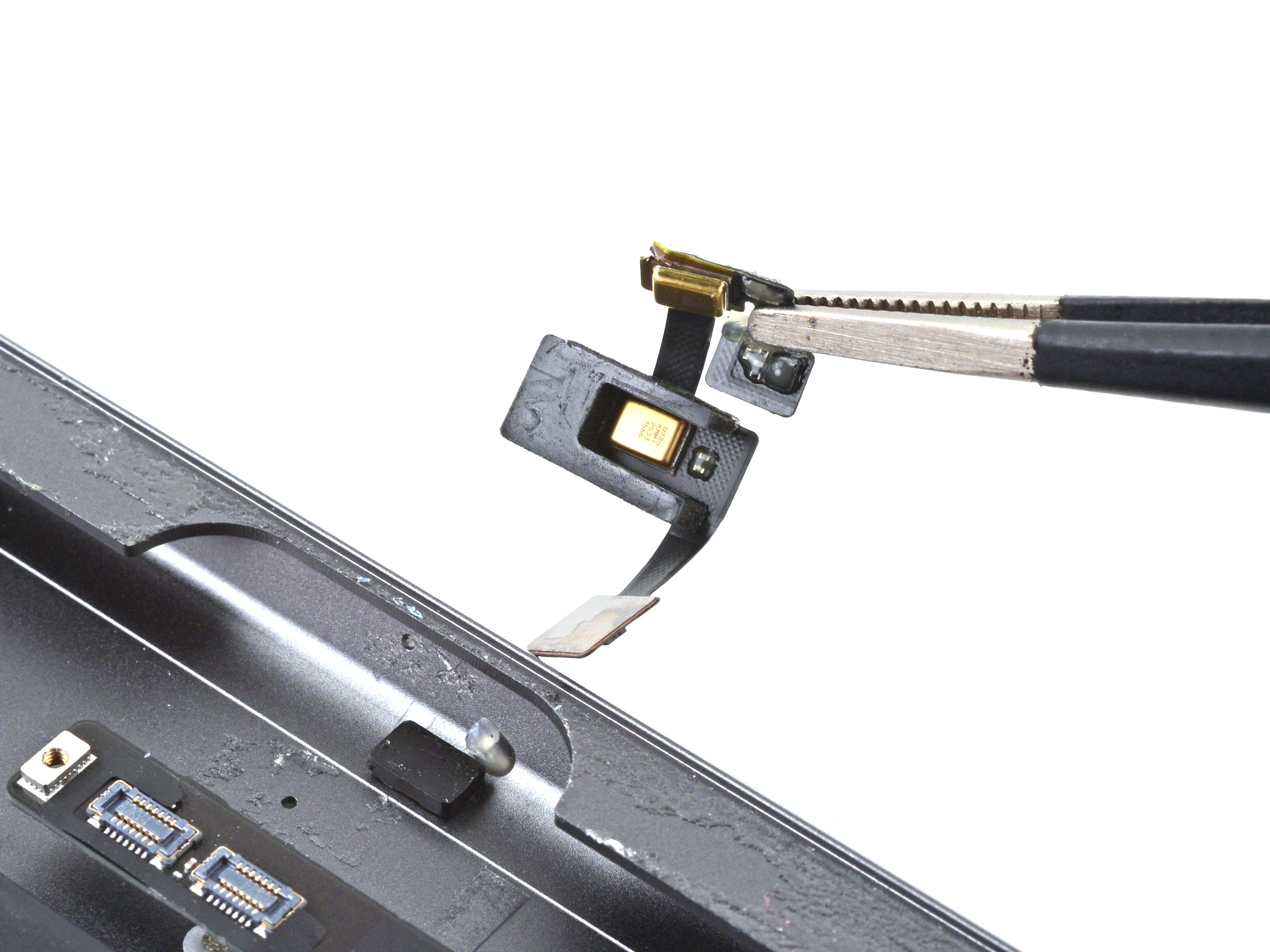iPad 8 Right Bluetooth and Wi-Fi Antenna Replacement
Duration: 45 minutes
Steps: 48 Steps
Before diving into the disassembly fun, make sure your iPad’s battery is below 25%—we don’t want any unexpected energy surprises. Safety first, then we’ll get to work!
Ready to swap out the Bluetooth and Wi-Fi antenna on your iPad 8 Wi-Fi? This guide is for the Wi-Fi version only (sorry LTE folks, you're gonna need to check out a different guide). First things first: for safety, make sure your battery's charge is below 25% before diving in. This helps reduce the risk of fire if the battery gets damaged during the repair. And hey, if your battery’s swollen, be extra cautious! When isolating the battery with a blocker, remember the contacts are delicate—bend or break them, and you're in for a world of hurt. If you decide to skip the battery isolation (your call), just steer clear of using metal tools, unless it’s absolutely necessary (like removing screws). We don’t want to short the battery or mess with sensitive components. Oh, and some of the photos in this guide might be from a different model, so don’t panic if you spot tiny differences—they won’t mess with your repair journey. If you hit any roadblocks, feel free to schedule a repair and we'll take it from there!
Step 1
- Warm up an iOpener and stick it onto the left edge of your device for a solid two minutes to get things nice and toasty.
Tools Used
Step 2
- As the adhesive takes a little time to soften up, keep in mind these spots that really don’t like being poked:
- Front camera
- Antennas
- Display cables
Step 3
The next three steps show you how to use the Anti-Clamp, a handy tool we created to make opening your device a breeze. If you're not using the Anti-Clamp, no worries! Just skip ahead three steps for an alternate method.
For detailed instructions on using the Anti-Clamp, you can check out this guide.
If you find the surface of your iPad too slick for the Anti-Clamp to grip, just use some tape to add a little texture and make it stick better.
- Slide the blue handle back to unlock the arms of the Anti-Clamp.
- Set your iPad on something so it stays level between the suction cups.
- Place the suction cups close to the center of the left edge—one near the top, the other near the bottom.
- Keep the bottom of the Anti-Clamp steady, then press down firmly on the top suction cup to create suction.
Step 4
- Give that blue handle a gentle tug forward to lock those arms in place.
- Now, twist that handle like you're turning a big wheel—360 degrees or until you see those cups start to stretch out.
- Keep an eye on those suction cups; they should be best buddies, perfectly aligned. If they start to wander off, just loosen them a tad and guide them back together.
Step 5
Take it easy, friend! Just give it a gentle twist—no more than half a turn at a time. And remember to chill for a minute between each twist. Let the Anti-Clamp and a little patience do their magic for you.
Want the full scoop on using a hair dryer? Check out this guide for all the deets.
If the Anti-Clamp isn't making the gap wide enough, no worries—just apply a bit more heat to the area and give the handle a half turn clockwise.
- Take a breather for about a minute to let that adhesive relax and create a nice little gap for you.
- If the screen's playing hard to get and isn't warming up, feel free to grab a hair dryer and gently warm up the left edge of the iPad.
- Slide an opening pick under the digitizer once the Anti-Clamp has done its magic and made a big enough gap.
- Feel free to skip the next step!
Step 6
If your screen is shattered to smithereens, slap on some clear packing tape to give that suction cup something to grab onto. No suction cup? No worries—strong tape can step in as your new best friend. And if all else fails, a dab of superglue to stick the suction cup right onto the cracked screen does the trick.
- When the screen feels warm to the touch, grab your suction handle and stick it right on the left edge of the screen, as close to the edge as you can get.
- Gently lift the screen using the suction handle to create a tiny gap between the digitizer and the frame.
- Slide an opening pick into the gap between the digitizer and the frame to start loosening things up.
Tools Used
Step 7
No need to stress if you can spot the opening pick peeking through the digitizer — just pull it out gently. The LCD should be safe, but be mindful, the adhesive might leave a little mess that's a pain to clean up.
- Pop in a second opening pick right where you made that first gap.
- Gently slide the pick down toward the bottom-left corner of your device to break the adhesive's grip.
- Keep that pick in the bottom-left corner to ensure the adhesive doesn't get a chance to reattach!
Step 8
- If the opening pick gets caught in the adhesive, try gently rolling it along the edge of the iPad to keep peeling away that stubborn sticky stuff.
Step 9
- Gently slide the first opening pick towards the top-left corner of your device to break free the adhesive.
- Leave the pick where it is in the top-left corner to keep that adhesive from sticking back together.
Step 10
- Warm up an iOpener and press it gently against the top edge of your device for two minutes. Let it work its magic—this will help loosen things up a bit.
Tools Used
Step 11
- Gently twist the pick around the top-left corner to sneakily loosen that adhesive.
Step 12
Be careful around the front camera—sliding the pick too close could risk damaging that precious lens! We'll show you exactly how to avoid this, step by step.
- Gently glide the opening pick along the top edge of your device, but make sure to stop just shy of the front camera. We want to keep that little eye safe and sound!
Step 13
- Gently pull the pick out until just the tip is nestled between the digitizer and the frame. You're doing great!
- Slide that trusty pick right above the front camera to break free the adhesive holding things together.
- Now, keep the pick close to the right side of the front camera before you move on. Almost there!
Step 14
- Slide the pick back in and glide it up to the top-right corner to fully loosen that stubborn adhesive.
- Keep the pick wedged in the top-right corner so the adhesive doesn't sneak back together on you.
Step 15
- Warm up that iOpener and give it a cozy spot on the right edge of your device for a solid two minutes!
Tools Used
Step 16
- Gently glide the pick around the top-right corner of your device to loosen the adhesive. Take your time, it’ll pop right off!
Step 17
The display cables hang out about halfway up from the bottom of the iPad. Stop sliding once you hit around three inches from the bottom to avoid any oops moments.
- Grab your trusty opening pick and gently slide it along the right edge of the iPad, aiming for the sweet spot in the middle. Easy does it!
Step 18
- Warm up an iOpener and place it on the bottom edge of your device for a cozy two minutes.
Tools Used
Step 19
Avoid spinning the pick all the way around the corner—it's a sure way to mess with the antenna. Keep it chill and steady!
- Gently slide the bottom-left pick into the corner to break free that stubborn adhesive.
- Keep the pick snugly in the bottom-left corner before you jump to the next step.
Step 20
When sliding the pick, remember to move it gently towards the home button – going the other way might mess with the antenna. Keep it cool, keep it safe!
If you need to slide the pick over this section again, simply remove it and try reinserting it from the bottom-left corner. No biggie, just a little adjustment!
- Pop a fresh opening pick into the gap you’ve just created at the bottom edge of the iPad.
- Slide it gently over the antenna, but stop right before you reach the home button.
- Leave the pick just to the left of the home button before you move on.
Step 21
Slide the pick in no more than 1 mm to keep the right antenna safe and sound.
- Gently slide an opening pick into the gap you've made so far.
- Carefully guide the pick under the home button and move it toward the bottom-right corner. Just make sure that only the tip of the pick is wedged between the digitizer and the frame.
Step 22
Slide the pick gently toward the home button only—going the other way might mess with the antenna, and we want to keep that signal strong!
If you need to glide the pick over this part again, just pull it out and pop it back in at the bottom-right corner to keep things smooth.
- Slide the pick back in and glide it toward the home button to fully separate that stubborn bottom adhesive.
- Park the pick just to the right of the home button before moving on to the next step.
Step 23
- Warm up an iOpener and stick it onto the right edge of your device for a solid two minutes to get things ready.
Tools Used
Step 24
Take your time with this one! Make sure the adhesive is nice and soft, and use a pick to carefully separate everything. If it feels tough, no worries—just reheat and keep going. Slow and steady wins the race!
If you hit some serious resistance, give the edges another warm-up and gently wiggle your opening pick along them.
- Gently twist the two opening picks at the left corners of your iPad. This will lift the digitizer just a bit, and while you're at it, you'll also be peeling away the last bit of adhesive. Take it slow and steady!
Step 25
- Gently lift the left side of the digitizer to loosen the adhesive along the right edge of your iPad. Take your time, we're almost there!
Step 26
- Keep the digitizer steady and gently slide an opening pick between the two display cables to carefully loosen the last bit of adhesive holding them together.
Step 27
- Once you've carefully separated all that stubborn adhesive, gently open the digitizer like you're flipping through a book, and lay it flat next to the iPad.
- When you're putting everything back together, don't forget to give the frame (and the digitizer, if you're reusing it) a good clean with some isopropyl alcohol to get rid of any leftover sticky stuff. Then, pop on some fresh adhesive strips or pre-cut adhesive cards.
- Pay extra attention to the display cables while reassembling. Make sure they’re neatly folded under the LCD screen to avoid any accidental damage!
Step 28
- Grab your trusty Phillips screwdriver and get ready to tackle those four 4.3 mm-long screws that are holding the LCD in place. You've got this!
- As you dive into this repair adventure, keep a close eye on those screws! They like to play hide and seek, so make sure to return each one to its original home to keep your device safe and sound.
- Don't forget to peel away any tape that might be blocking the view of those LCD screws. Clear the way for your repair heroics!
Step 29
Be careful not to fully detach the LCD just yet—it's still holding on by a flex cable. Take it easy and keep it attached for now!
- Grab your trusty spudger and gently pry the LCD out of its cozy spot just enough so you can get a good grip with your fingers.
- Now, flip that LCD like you're turning a page in a book, lifting it up near the camera and swinging it over to the home button side of the frame.
- Carefully place the LCD on a clean, soft, lint-free surface to give those display cables the room they need to breathe.
Tools Used
Step 30
- Grab your Phillips screwdriver and unscrew the 2.3mm-long screw holding the battery connector in place on the logic board. It’s a small one, but you’ve got this!
Step 31
Check out these snapshots to see what the battery connector looks like tucked under the logic board. Keep them handy as you carefully unplug the battery.
Heads up: the battery connector has cantilever springs on the logic board that gently press against the battery’s contact pads. Since both the logic board and battery are glued in place, you’ll want to slide something thin and flexible between the contacts to safely disconnect the battery.
Step 32
Heads up! When you’re isolating the battery with a battery blocker, take it slow and steady. Those battery contacts are super delicate—bend or break them, and that’s game over for your device.
Make sure the battery blocker is facing upwards, logo side up. It's a small detail, but it matters!
Don't force the battery blocker under the connector. If it’s being stubborn, try gently using a playing card to disconnect the battery instead. Take it slow, you’ve got this!
The battery blocker or playing card should slide smoothly under the logic board, with no obstacles in the way. Once it’s under, it should sit at a slight 15-degree angle, just chilling in place.
- Gently slide that battery blocker right under the logic board's battery connector at a cool 35-degree angle.
- Keep the battery blocker snugly in place while you tackle the rest of the repair!
Tools Used
Step 33
- Grab your trusty Phillips screwdriver and tackle those three 1.4 mm-long screws that are holding down the display cable bracket. You've got this!
Step 34
- Grab those tweezers or use your fingers to gently lift off the display cable bracket. You've got this!
Tools Used
Step 35
- Gently use the flat end of a spudger to lift and unplug the LCD cable press connector.
- When reconnecting press connectors like this, line it up carefully and press down on one side until you hear a click, then do the same for the other side.
- Avoid pressing in the middle—if the connector is off-center, those tiny pins could bend and cause serious damage.
Tools Used
Step 36
- Gently take out the LCD, then carefully place it face down on a clean, soft surface that's free of lint. We want that screen to stay safe and scratch-free while you work your magic.
Step 37
- Grab a trusty pair of tweezers and gently peel away the tape that’s holding down the home button cable ZIF connector. You've got this!
Tools Used
Step 38
- Grab a spudger, an opening tool, or even your trusty fingernail to gently lift the small, hinged locking flap on the home button cable ZIF connector. You've got this!
Tools Used
Step 39
- Grab your tweezers and gently pull the home button ribbon cable straight out of the ZIF connector—nice and steady!
Tools Used
Step 40
To keep your iPad safe, make sure you’re prying on the connectors themselves, not the socket on the logic board. It’s like giving your iPad a spa treatment – gentle and careful!
- Grab your trusty spudger and gently lift up to disconnect the two digitizer cable press connectors. Take your time, no rush!
Tools Used
Step 41
Careful! That home button ribbon cable is delicate—treat it like a cat on a hot tin roof and avoid poking or tearing it.
- Grab your trusty spudger and gently slide the flat end under the vibration isolator located in the bottom-right corner of your device. Give it a little pry and watch that isolator pop up with ease.
- Once it's free, go ahead and lift that vibration isolator out. You're on the right track!
Tools Used
Step 42
The home button cable is held in place with a bit of gentle adhesive.
- Grab your trusty tweezers and gently lift the home button cable away from the frame—easy does it!
Tools Used
Step 43
Grab an opening pick and gently slice through any leftover adhesive still holding the front panel assembly to the frame—think of it as cutting the last strings keeping them together.
Keep in mind, without proper insulation, parts of the digitizer might short out against other components, which can mess with your touch screen's response.
This insulation is sneaky—it's invisible to the naked eye and not the same as the foam dust barrier strips you see on many iPads.
- Carefully remove the front panel assembly.
- If you notice any 'ghost' or 'phantom' touch inputs on your new display, a thin layer of insulating tape like Kapton (polyimide) tape applied to the marked spots on the back of the panel usually does the trick. The replacement digitizers already come with this insulation, so you probably won't need extra tape.
- When putting everything back together, make sure to scrape off any leftover adhesive from the iPad. Clean the areas where you'll apply new glue using high-concentration isopropyl alcohol (90% or more) and a lint-free cloth. This step is key to getting a strong bond with the fresh adhesive.
- Before sealing up your iPad, test all its functions and apply pre-cut adhesive strips to the back of the display following our display adhesive guide.
Step 44
- Gently slide the pointy end of a spudger under the right antenna cable and lift straight up to pop it off. Easy does it!
- When putting things back together, these connectors can be a bit fussy. Position each connector over its socket and press down using the flat side of your spudger until you hear a satisfying little click. You've got this!
Tools Used
Step 45
Hold onto the antenna cable by the cable itself, giving that connector a break! Tugging on coaxial cables by their connectors can lead to breakage. Let's keep everything in tip-top shape!
- Gently lift the right antenna cable up and away. Nice and easy—no need to rush.
Step 46
- Grab your Phillips screwdriver and gently take out the three screws holding down the right antenna.
- One screw measuring 2.3 mm in length
- Two screws measuring 1.4 mm in length each
Step 47
The antenna cable is secured to the speaker with a tiny metal bracket. This bracket is snugly crimped to the antenna and stuck onto the speaker enclosure. To free the antenna, you'll need to cut through that adhesive. Let’s get to it!
- Gently slide an opening pick between the speaker enclosure and the bracket—easy does it!
- Now, glide that pick down towards the charging port to slice through the adhesive like a pro.
- With a little push, nudge the bracket away from the speaker until it's free from the tape below. You're doing great!
Step 48
- Carefully slip an opening pick between the antenna and speaker assembly.
- Gently slide the pick under the antenna to slice through the foam adhesive.
- Lift out the right antenna with care.
































































































































